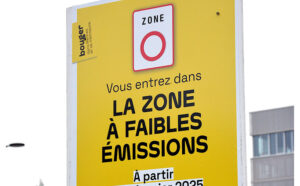Brighton & Hove Council are addressing residents who burn solid fuel to be careful what fuel they use wood, with a campaign that ties together air quality and elm disease.
In a press release titled ‘Help us protect the city’s historic elm collection and improve air quality’ the council explain the dangers of bringing elm logs into the city and point out that earlier this year dozens of elm trees had to be felled on a single street because of an outbreak of elm disease thought to have originated from logs stored nearby.
While issuing a video explaining how wood burning enthusiasts may differentiate elm logs from other varieties, the Council also point out that the best way to prevent elm logs being brought into the city, is for no-one to burn logs at all.
They explain: ‘Burning wood in fireplaces and burners is a big contributor to particulate pollution and implicated in 1 in 20 deaths of people over 30 in Brighton & Hove. It also has serious impacts on those with conditions such as asthma.’
Elm disease is currently a problem in Brighton at the moment so this two-birds-with-one-stone approach makes sense. The higher than usual outbreak means the city risks losing nearly a third of its elms.
The council have been using a drone to try and identify infected trees and have offered to inspect anyone’s woodpile to see it contains any elm. The council will replace any elm they remove from people’s stores with an alternative.
Councillor Tim Rowkins, cabinet member for Net Zero and Environmental Services said: ‘Brighton & Hove is very proud to hold the National Elm Collection, and our teams work hard throughout the year to stop the spread of elm disease, but we need everyone’s help.
‘If people really need to use their log burners and fireplaces this winter, it’s vital they don’t buy elm logs for burning or keep them stored in their gardens and woodsheds. This can spread the disease and could mean we are forced to fell more trees.
‘If we all play our part, we can improve the health of our residents and keep elms alive and flourishing in the city.’
















Leave a Reply